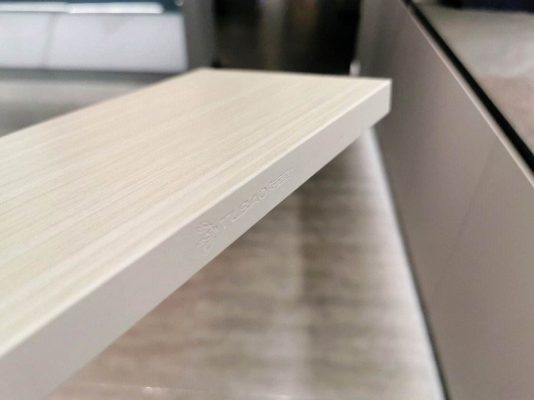Sanding before edge banding is a common practice in woodworking and furniture manufacturing. The goal of sanding before edge banding is to prepare the surface of the substrate (such as plywood or MDF) by creating a smooth and even surface. Here are the key reasons why sanding is typically done before applying edge banding:
- Smooth Surface Preparation:
- Sanding helps to smooth out any rough or uneven areas on the edges of the substrate. This ensures that the edge banding adheres properly and results in a flush, even finish.
- Improved Adhesion:
- Sanding the substrate creates a slightly roughened surface, providing better adhesion for the edge banding adhesive. This helps the edge banding bond securely to the substrate, reducing the likelihood of peeling or separation.
- Removal of Imperfections:
- Sanding can help remove imperfections, such as splinters, nicks, or irregularities on the edges of the substrate. This contributes to a cleaner and more professional-looking finished product.
- Enhanced Appearance:
- Sanding contributes to the overall appearance of the project by creating a uniform and aesthetically pleasing edge. A smooth and well-prepared substrate ensures that the edge banding blends seamlessly with the surface.

- Sanding contributes to the overall appearance of the project by creating a uniform and aesthetically pleasing edge. A smooth and well-prepared substrate ensures that the edge banding blends seamlessly with the surface.
Steps for Sanding Before Edge Banding:
- Select the Right Grit:
- Start with a coarse grit sandpaper (such as 80 or 100) to remove any major imperfections or uneven surfaces. Follow up with progressively finer grits (e.g., 120, 180) to achieve a smoother finish.
- Sand the Edges:
- Focus on sanding the edges of the substrate where the edge banding will be applied. Sand in the direction of the wood grain to avoid creating cross-grain scratches.
- Remove Dust:
- After sanding, thoroughly remove any sanding dust from the substrate. A clean surface is essential for proper adhesion.
- Inspect for Smoothness:
- Inspect the sanded edges to ensure they are smooth and free of imperfections. Run your hand along the edges to detect any rough spots that may need further attention.
- Proceed with Edge Banding:
- Once the substrate is sanded and cleaned, you can proceed with applying the edge banding. Follow the manufacturer’s instructions for the specific edge banding material you are using.
Sanding is a crucial step in the preparation process that contributes to the overall quality and appearance of the finished project. It is especially important when working with materials like plywood, MDF, or particleboard, where the edges may require additional attention to achieve a professional result.

